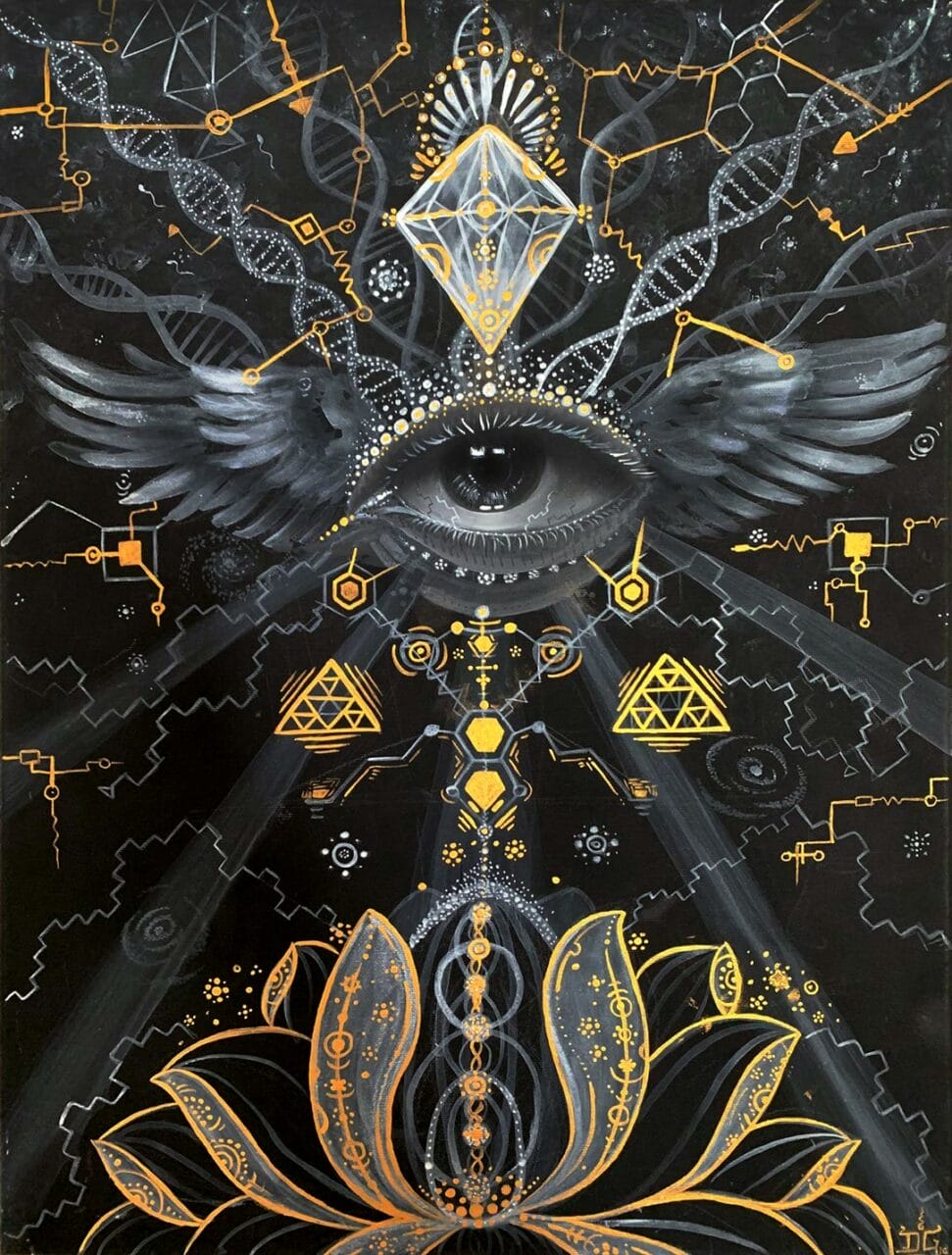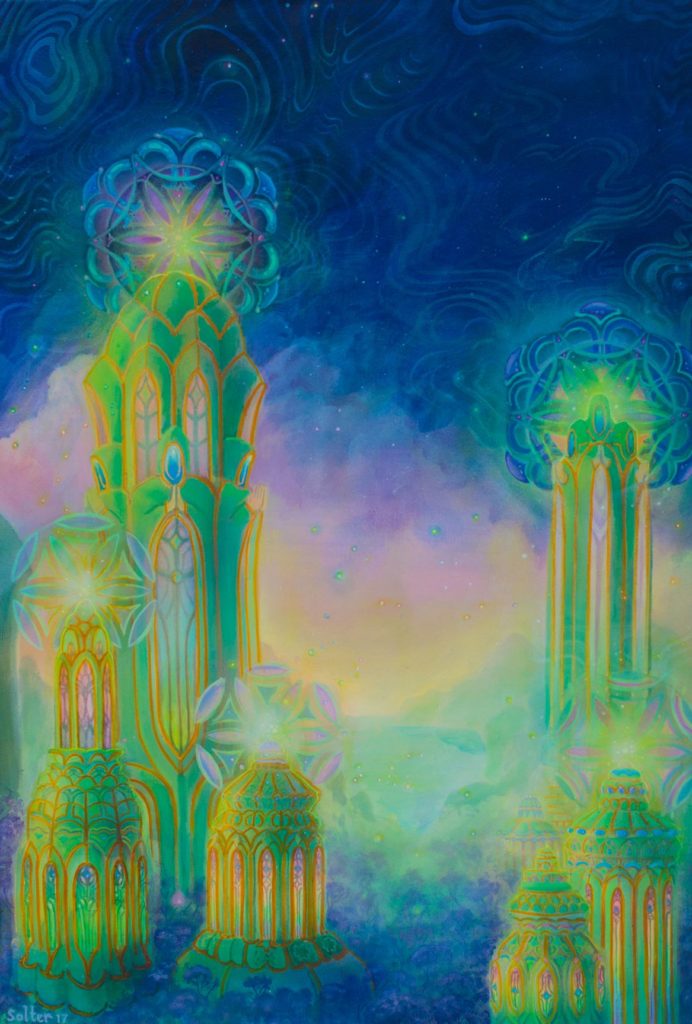
© Uni Kaya
A Historical Overview of Shrooms
Shrooms, with its existence tracing back to 9000 BC, as historical evidence suggests, is a category of unique mushrooms that encompasses over 200 species, all containing the hallucinogenic compound psilocybin. The effects of these mushrooms might include altered perception, auditory and visual hallucinations, and deeply spiritual experiences. For centuries, these mushrooms have played a vital role in spiritual ceremonies, rituals, and practices across diverse cultures and tribes, with a substantial number of these historical occurrences originating in North and South America.
Shrooms in the Ancient World
Throughout history, many cultures have exploited the potency of natural psychedelics. For instance, Psilocybe Cubensis was reportedly used by humans in the Sahara Desert over 7000 years ago, as archaeological evidence suggests. Archaeological findings point out the portrayal of this psychoactive substance in prehistoric art across various regions. For instance, indigenous tribes of North Africa in the Sahara illustrated its use in their artwork dating back to 9000 BC. Similarly, the revered Selva Pascuala mural rock painting in Spain, approximately 6000 years old, hints at the use of Psilocybe Hispanica in religious ceremonies. The influence of these substances on cultural evolution, religion, art, societal norms, and everyday life is becoming increasingly apparent. These substances have undoubtedly left a deep impression on our culture and society.
A Brief History of Shrooms Consumption
Historically, Shrooms have been in use for a prolonged time. The psychoactive substance we recognize today has been around for centuries, with diverse customs surrounding its usage. Who wouldn’t take advantage of the gifts of nature? It’s about time for Funguyz Canada to navigate the historical path that led Shrooms to its current standing.
Notable Milestones
- Traditionally, dried Shrooms have been used in rituals and spiritual healing for centuries. Today, they serve as a treatment for mental health conditions.
- Shrooms gained popularity with the hippie culture, playing a significant role in the psychedelic revolution and promoting its recreational use.
- Key figures such as Wasson, Sabina, and McKenna brought psilocybin to the forefront of the modern world.

© Jonathan Solter
Backing the Stoned Ape Theory
The Stoned Ape Hypothesis was proposed by Terence McKenna, suggesting that psilocybin might have contributed to human evolution, especially in the development of cognition. Despite some objections, the intriguing nature of this theory cannot be ignored.
Ancient Civilizations and Holy Rites
Historical civilizations depicted cubes in symbols, artworks, and statues, indicating the ritual use of Shrooms. Mayans and Aztecs used it for connecting with supernatural beings, including deities. Among the culturally diverse Aztec society, it was known as “teonanácatl“, which translates to “flesh of the gods”. The concept of a psychedelic experience was alien to them, causing them to interpret it as a divine entity. Venturing north to Siberia, hallucinogenic Shrooms were used by Siberian shamans. They specifically employed the hallucinogenic substance (Shrooms) known as “Amanita Muscaria” for spiritual healing and traditional customs, despite its toxic nature. This usage can be traced back to roughly ten thousand years ago. In African tribal ceremonies, particularly in the Congo and Zimbabwean tribes, cubes were used to communicate with ancestors, to provoke visions, and to promote spiritual healing. These historical civilizations provide context to the contemporary use of psilocybin. The reverence for this substance in these cultures arose from its divine connotations and its ability to trigger mystical experiences.
Shrooms in Mythology and Folklore
Several accounts, including those by Gordon Wasson, have highlighted the connection between Shrooms and the spiritual world, emphasizing its role in folklore and mythology as a medium for divine communication and enlightenment. In ancient India, the Soma—a ceremonial drink mentioned in the Vedas—was alleged to provoke altered states of mind. Scholars such as Wasson speculate that it could have been brewed from psychoactive plants, particularly fly agaric. Some even suggest that this ancient drink might have comprised a mix of various plants. Regardless of its origins, the psychedelic history indicates that Soma facilitated the manifestation of sacred symbols during rites, symbolizing a portal to higher knowledge or spiritual enlightenment.
The Contemporary Era
A Look at the
Beginnings
Historical texts from before the arrival of Columbus indicate that both the Mayans and Aztecs used psilocybin Shrooms. However, Spanish rulers in the 15th and 16th centuries deemed its usage as uncivilized, leading to a ban. In spite of the prohibition, shamans secretly continued to use magic Shrooms and thus preserved their cultural customs for over four centuries.
Rediscovery by the Western World
The 1950s saw a revival of interest in these substances in the West, largely due to the groundbreaking work of R. Gordon Wasson, Roger Heim, and Albert Hofmann. On a journey to Mexico, they were able to isolate the two psychedelic components (psilocybin and psilocin) found in the Shrooms acquired from the Mazatec tribe. Wasson went on to share his experiences, uses, and insights about magic Shrooms in Life magazine. His articles and first-hand experiences helped recognize the substance as a potent hallucinogen. By the 1960s, the substance had become emblematic of the Hippie movement and was perceived as a portal to spiritual explorations. However, its use also provoked considerable debate and led to a shift in the recreational use of hallucinogenic substances.
Further Development: Worldwide Ban
In 1971, the United Nations Convention on Psychotropic Substances classified psilocybin as a Schedule 1 illicit drug, along with Lysergic Acid Diethylamide and N, N-Dimethyltryptamine. They were all considered to have no medical benefits and a high risk of misuse. This resulted in widespread criminalization in Western nations, including Canada and the U.S., severely limiting the spiritual and therapeutic uses of the substance.
The Modern Resurgence of Psilocybin
In recent years, there has been a softening of the strict laws around psilocybin use, beginning with its decriminalization. This shift is in line with the UN’s permission for treaty member countries to regulate the substance as they see fit. At the same time, a growing body of research and clinical trials related to psychedelics and consciousness strongly supports potential medicinal benefits of psilocybin. A 2021 study examining the therapeutic use of psychedelics suggests that the 1970 prohibition significantly hindered further research. However, a preliminary study in 2004 reignited interest in psilocybin, suggesting potential uses in neuropsychiatry, specifically for treating mental health conditions such as:
- Depression, Anxiety, and Stress
- Post-traumatic Stress Disorder (PTSD)
- Obsessive-compulsive Disorder (OCD)
- Substance Abuse (Helping with Addiction Recovery)
- Excessive Consumption of Alcohol and Drugs)
Media and Art’s Influence
The topic of psychedelic cubes has gained significant traction, being represented across diverse platforms. This renewed interest and curiosity within the community are largely due to various media forms, artistic expressions, and literary works. Movies such as “Fantastic Fungi” by Director Louie Schwartzberg, along with documentaries that delve into their therapeutic benefits, have deepened the public’s understanding of these substances’ psychological and physical effects. Michael Pollan, the author of “How to Change Your Mind,” has extensively researched the use of psychedelics for mental health and spiritual development, thereby revitalizing their societal and therapeutic relevance.
Prominent Historical Advocates of Fungi
- María Sabina: María Sabina, a Mazatec shaman and poet from Mexico, played a significant role in bringing cubes to the Western world. She allowed Wasson to observe her Shrooms rituals.
- Gordon Wasson: Wasson, a writer, gained recognition for popularizing the drug globally. His detailed account of his experiences with Sabina contributed to a more comprehensive understanding of its local use.
- Terence McKenna: A prominent proponent of psychedelics, McKenna was instrumental in emphasizing their cultural and philosophical significance. He popularized the “Stoned Ape” theory through his speeches, writings, and research, portraying it as a tool for cognitive enhancement that shaped society.
A Snapshot of the Timeline
with TRD.
| Prehistoric | Prehistoric use is indicated by the stone art discovered in the Sahara, Africa |
| Ancient | The Mayan and Aztec civilizations incorporated teonanácatl into their religious and spiritual practices. |
| 16th Century | Use was discouraged due to its association with Indigenous beliefs |
| 18th Century | In 1799, the “intoxicating” effects of the drug came to light when four children accidentally consumed Psilocybe Semilanceata, highlighting the potential negative effects of its use. |
| 20th Century | The drug was introduced to the Western world by Wasson and Sabina, sparking a psychedelic revolution among the hippie culture. The UN legalized the possession and consumption of the substance. |
| 21st Century | Clinical studies are underway to validate its medical potential increasing. Health Canada has initiated a Special Access Program for its application. |
The Emergence of the Psychedelic Era and Beyond Redemption | Purchase Shrooms Online at Funguyz Canada
The consistent usage of cubes at Funguyz Canada, supported by substantial scientific research, will persistently expand until it achieves global acknowledgement. Funguyz Canada’s online Shrooms store is prepared to facilitate this evolution. Our extensive range of products attracts customers, encouraging them to embark on the intriguing and therapeutic journey of psilocybin. Secure your preferred items from Zoomies today.
Commonly Asked Questions
No, Amanita Muscaria does not contain the active constituents present in Psilocybe Cubensis. Instead, the psychoactive substances in fly agaric are muscimol and ibotenic acid. One prevalent theory about Soma’s origin proposes it to be a concoction of various psychoactive plants. Similarly, ayahuasca is a mind-altering concoction. However, the only link between the two is the perception of soma as an analogue of ayahuasca. It was examined for potential Shrooms poisoning after it was classified as a toxic Shrooms. Currently, we recognize it as the Psilocybe Mexicana.

